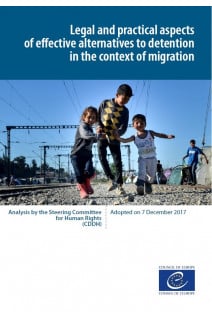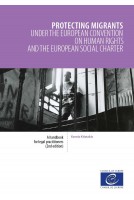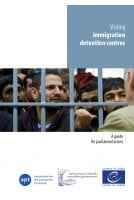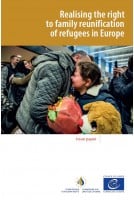EXECUTIVE SUMMARY I. INTRODUCTION 1. CONTEXT
2. TERMS OF REFERENCE
3. DEFINITIONS AND SCOPE
3.1. Definitions
3.1.1. Immigration detention
3.1.2. Alternatives to immigration detention
3.2. Scope of the Analysis, persons concerned and sources referenced
II. LEGAL ASPECTS: APPLICABLE HUMAN RIGHTS STANDARDS 1. THE EUROPEAN COURT OF HUMAN RIGHTS AND OTHER COUNCIL OF EUROPE STANDARDS
1.1. Right to liberty: Article 5 of the Convention
1.1.1. General conditions
1.1.2. Detention under Article 5 § 1(f)
1.1.3. Detention under Article 5 § 1(b)
1.2. Procedural safeguards
1.3. Obligation to consider alternatives to detention (other Council of Europe bodies)
1.4. Positive obligations in relation to vulnerability
1.4.1. The Court’s jurisprudence
1.4.2. Other Council of Europe bodies
1.4.3. Specific considerations for persons in a vulnerable situation
1.5. Ensuring dignity and respect for other fundamental rights whilst placed in the community
1.5.1. Restrictions on the freedom of movement
1.5.2. Living conditions
2. OTHER INTERNATIONAL STANDARDS (UNITED NATIONS AND EUROPEAN UNION)
2.1. Right to liberty
2.2. Obligation to consider alternatives to detention
2.3. Procedural safeguards
2.4. Positive obligation to avoid detention for persons in a vulnerable situation
2.5. Alternatives must always rely upon the least restrictive measure possible
2.6. Alternatives must never amount to deprivation of liberty or arbitrary restrictions on liberty of movement
2.7. Alternatives must be established in law and subject to judicial review
2.8. Alternatives must ensure human dignity and respect for other fundamental rights
III. PRACTICAL ASPECTS: EFFECTIVE ALTERNATIVES TO IMMIGRATION DETENTION 1. ESSENTIAL ELEMENTS OF EFFECTIVENESS
1.1. Screening and assessment
1.2. Access to information
1.3. Provision of legal assistance
1.4. Building trust in asylum and migration procedures
1.5. Provision of case management services
1.6. Safeguarding dignity and fundamental rights
2. TYPES OF ALTERNATIVES TO IMMIGRATION DETENTION
2.1. Registration with authorities
2.2. Temporary residence permits
2.3. Case management or case worker support
2.4. Alternative family-based accommodation
2.5. Residential accommodation
2.6. Open centres or semi-open centres
2.7. Regular reporting
2.8. Designated residence
2.9. Supervision
2.10.Return counselling
2.11.Return houses / return centres
2.12.Bail, bond, guarantor or surety
2.13.Electronic monitoring
3. BENEFITS OF EFFECTIVE ALTERNATIVES TO DETENTION
3.1. Respecting the rights and needs of individuals
3.2. Compliance with migration procedures
3.3. Cost-effectiveness
IV. OVERVIEW OF POLICIES AND PRACTICES ON ALTERNATIVES TO IMMIGRATION DETENTION V. THE WAY FORWARD: THE NEED FOR FUTURE WORK BY THE CDDH – ADDED VALUE AND NEXT STEPS 1. THE NEED FOR FUTURE WORK 2. POSSIBLE NEXT STEPS











